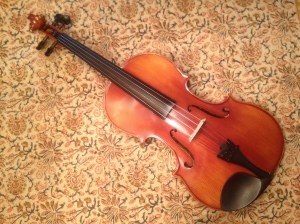Art Creators: The Anxiety of Millennials
by Annabelle Clippinger
“It is difficult to get the news from poems yet men die miserably every day for lack of what is found there.” –William Carlos Williams
As the director of the PITT ARTS program at University of Pittsburgh, I personally work with a number of young musicians. Inquiring as to their educational backgrounds, I find it noteworthy that many of them have Masters Degrees in their creative fields, but subsist as freelancers. As such they have had an extensive professional preparation, but they haven’t gotten the plumb positions (yet), and many of them are in a state of anxiety about what the future holds for them.
 On the other hand, I also have a son who is a senior in high school and a talented violinist who wishes to attend conservatory for performance. His own expression of ambivalence about this career choice has been the splinter in the passion. Yet, when we attended a performing arts college fair at Oberlin College recently, the volume of high school students interested in performing arts careers was daunting. It was almost impossible to wade through the humanity to get to speak to the 30 plus tables of admissions professionals that day.
On the other hand, I also have a son who is a senior in high school and a talented violinist who wishes to attend conservatory for performance. His own expression of ambivalence about this career choice has been the splinter in the passion. Yet, when we attended a performing arts college fair at Oberlin College recently, the volume of high school students interested in performing arts careers was daunting. It was almost impossible to wade through the humanity to get to speak to the 30 plus tables of admissions professionals that day.
The messages appear contradictory. Yet when one listens to the questions students asked, perhaps they are not. The student monopolizing the admissions specialist at the Eastman School of Music table, wanted to know if he studied Engineering at RIT, could he still study at the Eastman School. Evidently this was a very compelling question, as the person tabling answered it to the exclusion of all other potential inquiries for about 15 minutes.
This is the signal that art creators are hearing, and even conservatory administrators are alarmist about the future of their artists. If the student does not have a proper back-up career, then the outcome is highly questionable. The five year dual degree program at Bard College is a good example. All students enrolled in the Bard Conservatory are required to take another major. With other five year programs at prominent music schools like Peabody Institute of Johns Hopkins ending with a Master’s degree, one has to ask the value of a required dual Bachelor’s Degree, and the impact it will have on creative training. Not to mention affordability, which is one of the main concerns for families today with regard to college choice, and which has funneled more than its fair share of talented artists from pursuing creative careers in this economy. Other signals to arts creators include conservatory programs requiring entrepreneurship or business focus in conjunction with creative training, and this is taking place in top music schools such as The Julliard School and The Manhattan School of Music. (Bloomsberg Business Week, March 28, 2007 “Teaching Musicians to Be Entrepreneurs”)
All of this suggests that artistic training is not a good in itself, anymore. A friend recently shared an anecdote about a gifted cellist who said, “Do the math” – meaning: what is the probability that he would get a position in an orchestra if there are 150 cello auditions for one position? Even a poet can do that math. The packaging and reselling of conservatory programs matches the anxiety of this generation.
Yet is it all smoke and mirrors to assuage the Millennials’ anxiety about creative training that has a significant price tag and uncertain outcomes? Perhaps one might say that uncertainty is the nature of the times, for non-creative college degrees likewise have uncertain outcomes. After all, over 20% of Millennials are moving back with their families after college graduation, and of those 75% report being content with their living situation (cf. Pew Research “The Boomerang Generation”).
I hope that we are loathe to witness an age where creative professionals are fewer and fewer, are watered down more and more, and arts administrators and entrepreneurs will have to preside over a sagging art form that the artists and conservatories themselves shaped out of their own fears.
Annabelle Clippinger is the Director of PITT ARTS.
*****
Articles of Related Interest from The Muse Dialogue:
“The Classical Musician’s Paradigm Shift,” by Annie Gordon
“Seeking the Love of Music That I Once Felt,” by Erin Yanacek
“The Seriousness of a Child at Play” by Andrew Swensen
“Barnett Newman and the Slashed Paintings,” by Annabelle Clippinger









